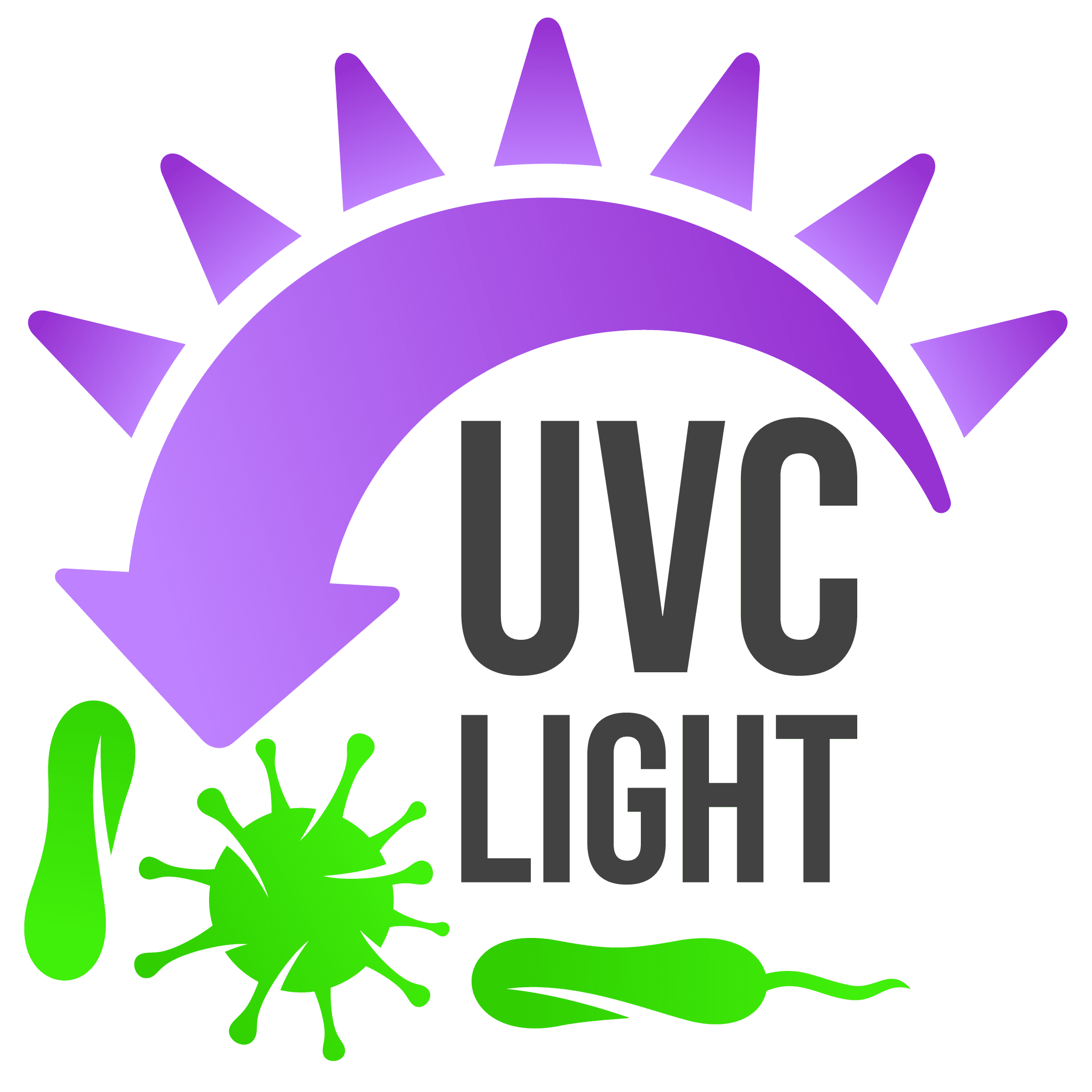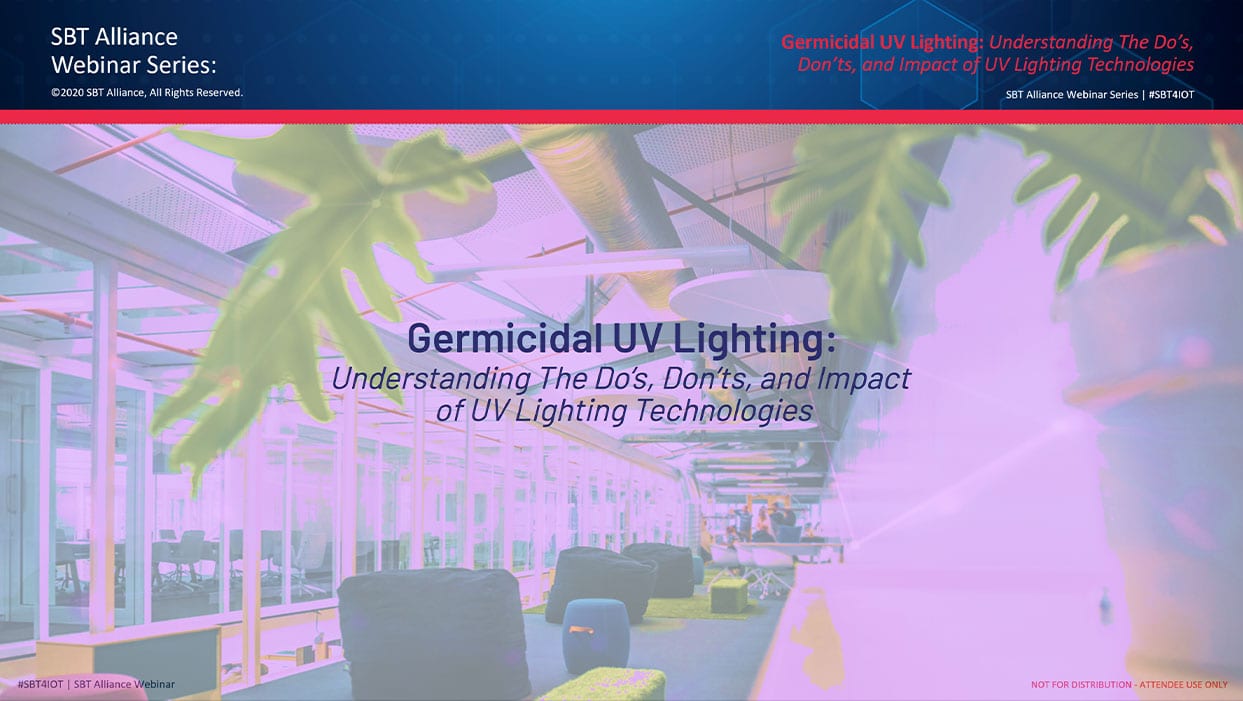GERMICIDAL UV & YOUR BUSINESS
How Today’s IoT Technologies Can Foster Healthier Workplaces!
As businesses of all shapes and sizes continue to map their response to COVID-19 and craft their reopening strategies, ultraviolet lighting has gained significant traction among end-user businesses. But what does UV lighting entail, and how should your business approach this advancing technology?
ON-DEMAND WEBINAR
Key topics covered in this webinar include:
• Deploying and controlling germicidal UV lighting safely and effectively.
• How your business should approach germicidal UV lighting technologies.
• Whether or not UV technologies can advance regulatory compliance.
• What the future holds for the health, safety, and security of employees & customers.

WHAT IS GERMICIDAL UV LIGHTING?
Germicidal lamps emitting ultraviolet-C (UV-C) radiation have been in use since the 1930s (Wells and Wells 1936). These are most commonly low-pressure mercury-vapor discharge lamps, which are basically fluorescent lamps without a phosphor coating and fused quartz rather than borosilicate glass bulbs. They emit monochromatic radiation mostly at 254 nm, a wavelength that is very effective in disrupting the DNA of viruses, bacteria, and other pathogens...
GERMICIDAL UVC LIGHTING - FAQ
The 2014 outbreak of the Ebola virus and the recent spread of the novel coronavirus disease 2019 (COVID-19) have renewed interest in germicidal ultraviolet (GUV) lamps for disinfection. UV radiant energy was first used for disinfecting surfaces in 1877,1,2 for water in 1910,3 and for air in 1935.4 GUV’s use in recent decades has been largely limited in the U.S. to water treatment facilities and hidden (shielded) in heating and air-conditioning ductwork, or used in biological laboratories. GUV is being used in many countries to control airborne transmission of tuberculosis (TB). In addition, some U.S. healthcare facilities are now using autonomous mobile units (``robots``) to add enhanced hygiene to patient rooms in order to reduce hospital acquired infections. More-widespread use of GUV is often limited by safety concerns, but these are manageable and minor compared to potential infection prevention. Most of the public are not aware of its unique value in disinfection of air and contaminated surfaces...


